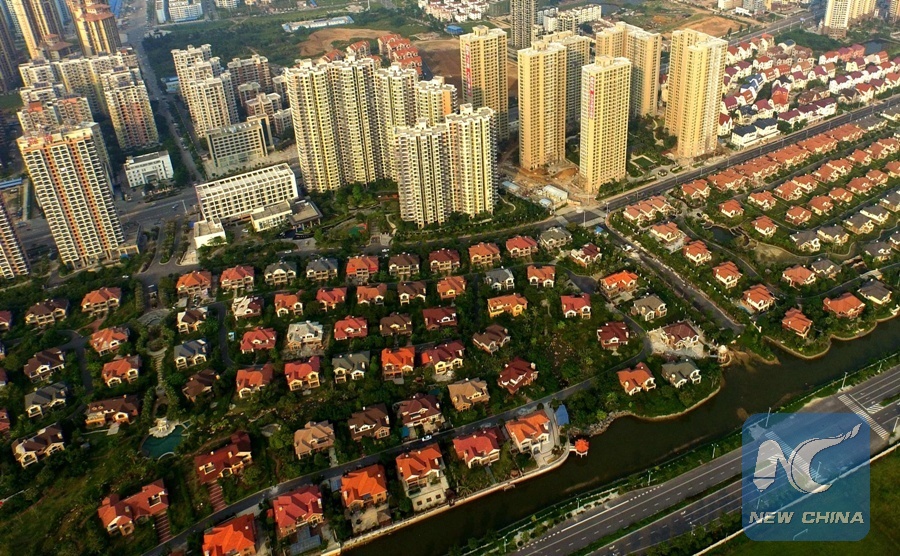
Photo taken on Oct. 17, 2015 shows the aerial view of Beihai city, southwest China's Guangxi Zhuang Autonomous Region. Beihai city, starting point of China's ancient marine silk road towards outside world, plays an important role in China's foreign trade over 2,000 years ago. (Xinhua/Huang Xiaobang)
NEW YORK, May 8 (Xinhua) -- The Belt and Road Initiative will "open up huge opportunities" for the international capital markets due to the potential colossal financing needed to undertake the huge project in years to come, U.S. experts said recently.
The project, proposed by Chinese President Xi Jinping in 2013, aims to build a trade and infrastructure network connecting Asia with other parts of the world along the ancient Silk Road trade routes over land and sea.
"This is such a monumental project in terms of creating the whole new infrastructure, sea and land," Caroline Owen, CEO and founder of an independent renminbi (RMB) internationalization advisory firm -- RMB Global Advisors, told Xinhua at a business seminar organized by Bank of China and the Hong Kong Trade Development Council (HKTDC).
The initiative will help boost RMB internationalization, Owen said.
"Also in terms of trade, as these roads and routes are built, there will be more use of RMB along the way," said Owen, who advises having extensive cooperation in the consumer goods, retail, industrial and commodity sectors on redenominating their invoicing from U.S. dollars to RMB.
The cumulative investment in the Belt and Road Initiative is estimated at trillions of U.S. dollars in the coming years and it takes joint efforts of the countries involved to offer long-term and sustainable financial support.
Part of the funding will come via the 40-billion-dollar Silk Road Fund, and the 100-billion-dollar Asian Infrastructure Investment Bank (AIIB), whose membership has increased to some 70, second only to that of the World Bank.
"I think the development of AIIB is kind of a complement, rather than competition to other international financial institutions, like the world Bank, Asian Development Bank and etc.," Antony Mak, a HKTDC director, told Xinhua.
"AIIB really gives a lot of opportunities for developing nations, especially for East Asia, South Asia, Middle East, etc., to have access to funding which previously they did not have," he said.
"There is a lot of research which shows the infrastructure opportunities are a lot larger than the current capital available from financial institutions," he added.
Mak also noted that Hong Kong, an international financial center in Asia and a new AIIB member, can make good use of its unique advantages in its possession of world-class talents and expertise in handling large-scale projects to make the bank more successful.
In late February, the Asian Development Bank (ADB) said the emerging Asian nations are expected to need about 26 trillion dollars in infrastructure investment from 2016 to 2030. That is 1.7 trillion dollars a year, more than twice what the ADB had forecast in 2009.
?




